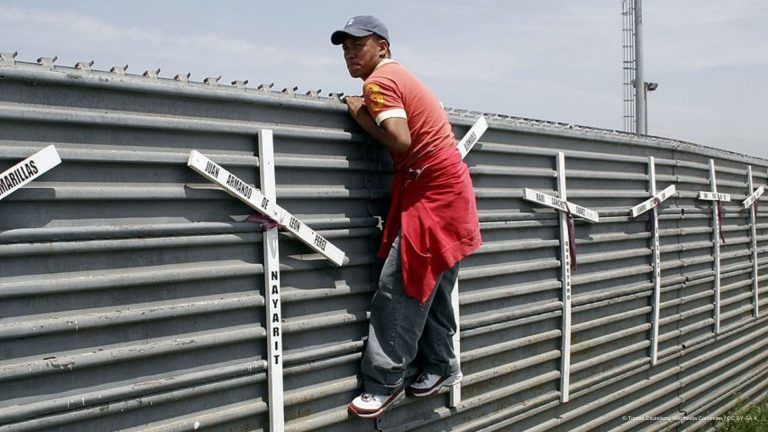Trade distortion and protectionism
What if Trump uses tariffs on Mexican imports to force immigration changes?
Published 06 June 2019 | 4 minute read
President Trump’s shocking May 30 threat to impose tariffs on all Mexican imports over its supposed inaction on illegal immigration raises many questions.
Setting aside the foremost question of whether this trade action is an appropriate remedy to address immigration, does U.S. law, specifically, the International Emergency Economic Powers Act (IEEPA), even grant the President this authority?
Arguably, yes, although Trump’s action is certainly vulnerable to legal challenge.
Legal authority and challenges
IEEPA grants the U.S. President broad and sweeping powers that could certainly be interpreted to encompass imposing tariffs, although the IEEPA does not mention tariffs, duties, or import restrictions. IEEPA allows the President, after declaring a national emergency, to deal with any “unusual and extraordinary threat” including by regulating transfers in foreign exchange, and importation and exportation of relevant property.
On the one hand, courts have shown great deference to a President’s authority during national security emergencies, including when interpreting the IEEPA. Although no President has ever invoked the IEEPA to impose tariffs, President Nixon’s use of the Trading with the Enemy Act (TWEA) to impose a 10% tariff on all U.S. imports arguably provides legal precedent for doing so, as the IEEPA amended and updated the TWEA.
On the other hand, the IEEPA does not specifically mention tariffs or other import restrictions, which could be a problem. The U.S. Constitution gives Congress authority to impose tariffs. When Congress has delegated this authority to the Executive Branch, it has done so with specificity. A good example is Section 232 of the Trade Expansion Act of 1962, which tells the Executive what to do at the nexus between tariffs and national security, and in detail instructs the Executive Branch on the actions it must take to determine whether there is a national security threat with respect to imports. Legal challenges could argue that the IEEPA is silent on tariffs because other legal authorities, like Section 232, explicitly provide the relevant tools.
Further, President Trump may try to rely on his February 15, 2019 declaration of a national emergency on illegal migration for authority under the IEEPA. If so, legal challenges could point to the fact that, in a bipartisan vote, Congress resolved to terminate this declaration, though Trump later vetoed the resolution. Congress would likely disagree with the use of its borrowed tariff authority to remedy what it considers a non-emergency. If he makes a new declaration, Congress will have the opportunity to terminate it.
The costs of this action
If imposed, these tariffs will place a terrible burden on U.S. importers, which will certainly be passed on to U.S. consumers. According to a U.S. Chamber of Commerce analysis, last year, the U.S. imported US$346.5 billion of goods from Mexico, so a 5 percent tariff would amount to an annual tax increase of more than US$17 billion. And if Mexico does not meet Trump’s demands, whatever they may be, tariffs could increase to as much as 25% on October 1 amounting to a cost of over $86 billion to U.S. consumers annually.
U.S. exporters would also suffer, as Mexico would almost certainly retaliate by imposing its own tariffs on U.S. exports. Many of these exporters are hurting already because of retaliatory tariffs imposed by China and other countries in response to Trump’s Section 232 and Section 301 tariffs.
Other costs may be harder to measure but no less significant.
Uncertainty in trade relations will inhibit business operations. Businesses require predictability in trade relations in order to plan their operations and build stable, efficient supply chains. With this action, Trump has introduced serious uncertainty in U.S. business operations involving Mexico that depend on cross-border supply chains built over decades under NAFTA rules. Businesses that might otherwise want to expand operations, invest in research and development, or hire new workers, will avoid doing so if they think they will now incur additional costs from tariffs or shifting supply chains. Businesses that may have considered moving operations from China to Mexico to avoid tariffs might look elsewhere, with the knowledge that no location is necessarily safe from Trump’s tariffs.
Congress could curtail Presidential powers to apply tariffs or other import restrictions. Since Trump took office, Members of Congress have been considering whether to place restrictions on the President’s ability to impose tariffs. This use of IEEPA may prompt them to act – to specify that the IEEPA does not grant the authority to impose tariffs, or that any Presidential imposition of tariffs be subject to Congressional approval – and any restrictions they place on Trump would also apply to future administrations.
Imposing tariffs in this context undermines the international trade system. Trump’s use of IEEPA further undermines the credibility of U.S. commitments under trade agreements and erodes the effectiveness of the international trade system, as this action runs afoul of both NAFTA and WTO rules. Though governments may justify tariffs by citing national security concerns, it is highly unlikely that anyone who negotiated the agreements or anyone adjudicating them would find that “illegal migration” falls under the definition of national security. And if they did, the definition of national security would become so broad as to give no clear limit to a government’s ability to impose tariffs.
This action undermines U.S. credibility in current and future trade negotiations. Taking this action against a trading partner like Mexico, under an authority like the IEEPA, sends dangerous signals about the United States’ credibility in negotiations and as a trading partner. If the United States could do this to Mexico after just concluding a trade agreement, why would any country trust any agreement the Trump Administration makes? What incentive does a U.S. negotiating partner have to open their markets or make permanent changes to their domestic laws to meet President Trump’s demands? And how will the United States rebuild trust with its trading partners once Trump is out of office?
There is still time to avoid tariffs. Hopefully cooler heads in the U.S. and Mexican governments will find a constructive approach unrelated to trade to address immigration challenges.
For in-depth analysis and history of the IEEPA, see this detailed Congressional Research Service report. The Petersen Institute for International Economics produced an insightful 2016 analysis on Trump’s potential use of IEEPA and other laws to impose tariffs that is helpful for understanding the present moment.
© The Hinrich Foundation. See our website Terms and conditions for our copyright and reprint policy. All statements of fact and the views, conclusions and recommendations expressed in this publication are the sole responsibility of the author(s).




